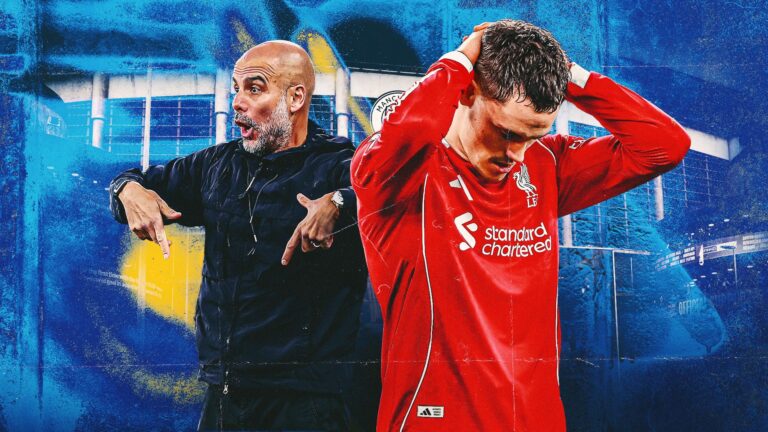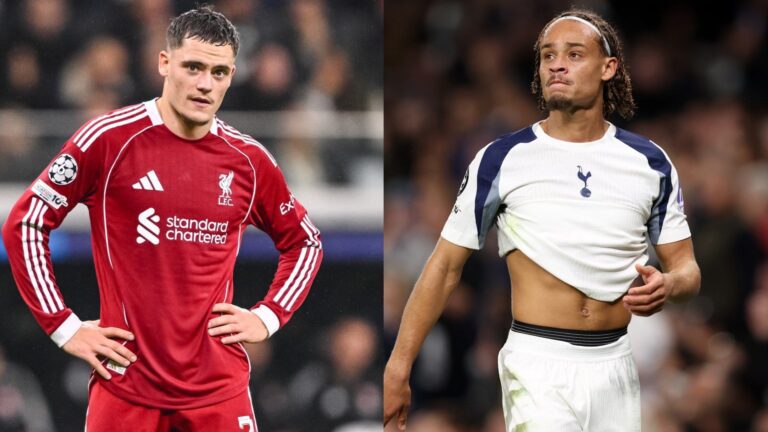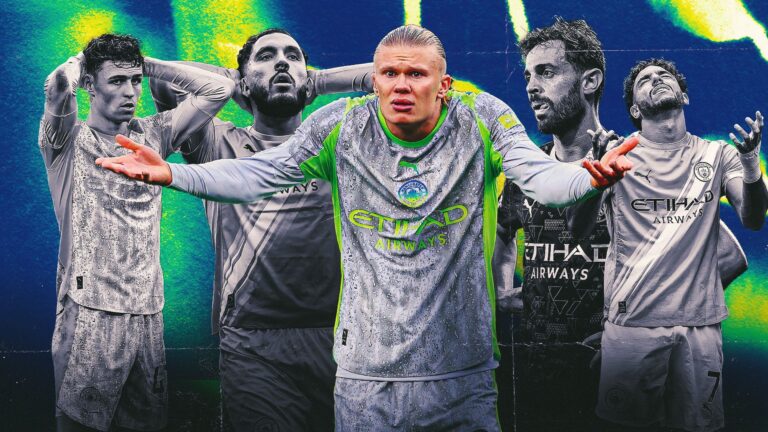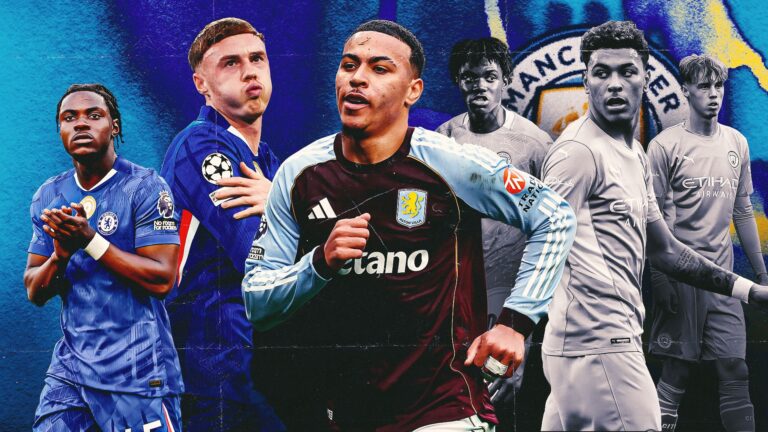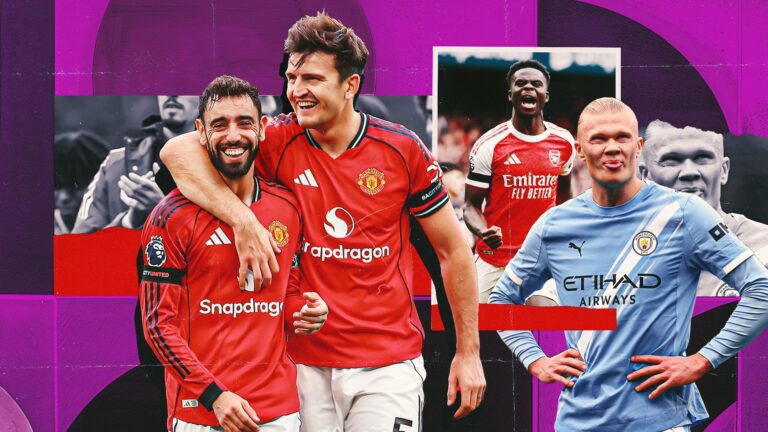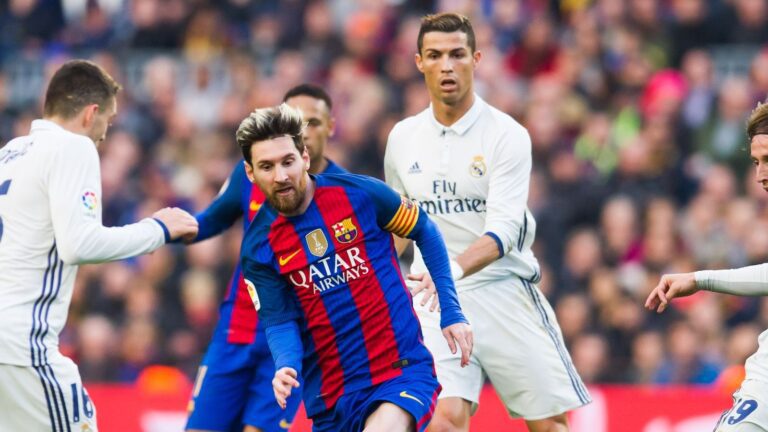Unveiling the Top Performers in the 2025 Transfer Market
The 2025 summer transfer window has officially shut down, capping off a period brimming with intense rivalries and heated debates in football. Teams in the Premier League outspent their counterparts in the other major European leagues collectively, raising concerns that leading clubs from La Liga, Serie A, Bundesliga, and Ligue 1 might start serving as talent suppliers to England’s top-tier outfits.











Bayern Munich’s Summer Overhaul and Its Uncertainties
Despite strong performances on the pitch, Bayern Munich faces significant turbulence behind the scenes, largely due to their disorganized approach to the transfer window. Opinions vary on whether sporting director Max Eberl’s strategy fell short or if budget constraints from the executives limited his options, but one thing is evident: the team’s roster lacks the depth needed for title challenges in both the Bundesliga and Champions League, as Eberl himself acknowledged.
Individually, letting go of players like Kingsley Coman, Thomas Muller, Leroy Sane, Eric Dier, and Joao Palhinha was logical, yet the overall influx of talent doesn’t measure up in terms of numbers or skill. Luis Diaz is already making an impact in Bayern’s offensive play-despite his inflated price tag-and Jonathan Tah’s free-agent addition is a smart win. Still, the hefty loan fee of €16.5m for Nicolas Jackson from Chelsea, coupled with a €64m buy obligation, highlights the frantic decisions made as the window wound down.
Vincent Kompany boasts a formidable starting eleven that can compete with Europe’s elite, but shortages in critical positions persist. Combined with off-field problems and failures to secure targets like Florian Wirtz and Nick Woltemade, these issues have sparked valid concerns at the Allianz Arena.
Barcelona’s Financial Recovery Through Player Movements
Barcelona continues to navigate the fallout from past financial errors, prioritizing the sale of excess players over acquiring new ones this summer transfer window. In this light, their efforts were effective, generating €37m in revenue while spending only €29m.
Key Acquisitions and Missed Chances
Though not in dire need of a goalkeeper, Hansi Flick pushed for one, and Deco cleverly exploited a low buy-out clause to bring Joan Garcia from Espanyol for €29m, securing a top young talent from their rivals. The €3m investment in Roony Bardghji, a promising Danish youth, might prove to be a steal down the line.
Yet, settling for Marcus Rashford after chasing Nico Williams and Luis Diaz feels disappointing for Barcelona. The loss of Williams stung, as he was eager to join, but he backed out when the club wouldn’t add an exit clause tied to La Liga registration. Adding insult to injury, Inigo Martinez’s move to Al-Nassr came after Barcelona’s promise to release him for a big Saudi offer, leaving Flick without a pivotal player from last season’s triumphs at no cost.
Ultimately, Flick’s lineup remains as potent as before, but it hasn’t gained the edge needed to advance.
Paris Saint-Germain’s Targeted Squad Refinements
Following their treble success, Paris Saint-Germain chose not to overhaul their squad, but Luis Enrique had specific demands.
Defensive and Goalkeeping Shifts
He sought a reliable, ball-handling center-back to back up Willian Pacho and Marquinhos, and Illia Zabarnyi met that need perfectly.
More crucially, Enrique demanded a goalkeeper upgrade, as he was dissatisfied with Gigi Donnarumma’s ball distribution despite the Italian’s role in their Champions League victory. The switch to Lucas Chevalier from Lille, who excels as a sweeper-keeper, was bold, though Donnarumma’s quick move to Manchester City will draw scrutiny. Enrique is content overall, except for the collapsed permanent transfer of Randal Kolo Muani to Juventus, leading PSG to loan him to Tottenham instead.
Manchester United’s Steps Toward Rebuilding
The repercussions of Manchester United’s prolonged poor recruitment are still evident, delaying their return to major competitions, though the summer transfer window showed some advancement in their dealings.
Outgoing Transfers and Attack Reinforcements
They successfully placed discontented wingers Alejandro Garnacho at Chelsea and Antony at Real Betis, and Rasmus Hojlund’s loan to Napoli could turn permanent if the Italian side qualifies for the Champions League next year.
Marcus Rashford and Jadon Sancho are off the payroll temporarily, but their potential return next season looms. These exits enabled United to refresh their forward line with Matheus Cunha, Bryan Mbeumo, and Benjamin Sesko, though the trio has struggled for goals early on, and Sesko appears unfit and lacking confidence.
They overlooked midfield weaknesses beyond retaining Kobbie Mainoo, and the young Senne Lammens must address their goalkeeper woes. Fans at Old Trafford may face another challenging year under Ruben Amorim’s strict tactics.
Tottenham Hotspur’s Mixed Bag of Transfers
Tottenham supporters endured a whirlwind transfer window, from thwarted attempts to sign Morgan Gibbs-White and Eberechi Eze to their rivals, to eventual boosts for Thomas Frank’s squad.
Strengthening the Front Line
The late additions of Xavi Simons and Randal Kolo Muani fortified an injury-plagued attack. With Mohammed Kudus already proving his worth, Tottenham’s offensive options look robust, and Joao Palhinha’s loan from Bayern Munich stands out as a defensive anchor.
Defensive depth is a worry, but there’s optimism for the season ahead. Frank’s history of player development suggests he can maximize talents like Simons and Kolo Muani, especially with a World Cup on the horizon.
Manchester City’s Ongoing Challenges in Transfers
After a disappointing winter intake, Manchester City hoped for better from their summer transfer window, but results are mixed so far.
New Signings and Strategic Questions
Among the January additions costing £180m, only Omar Marmoush has impressed, while Tijjani Reijnders, Rayan Cherki, and Rayan Ait-Nouri have potential yet to shine.
Replacing Ederson with Gigi Donnarumma raises questions, given City’s recent re-signing of James Trafford and Donnarumma’s mismatch with Pep Guardiola’s style. Sales like James McAtee and Maximo Perrone brought in funds, but not reinvesting in a proper right-back or keeping Jack Grealish has left doubts. Overall, the window, like City’s league start, leaves more puzzles than solutions.
Real Madrid’s Defensive Focus and Intrigue
Real Madrid’s transfer window was more about calculated moves than extravagance, with Xabi Alonso’s appointment as coach highlighting their defensive priorities.
Key Defensive Additions
Dean Huijsen finally joined from Spain, Alvaro Carreras came from Benfica, and they eagerly secured Trent Alexander-Arnold early for the Club World Cup. Alexander-Arnold could enhance Alonso’s tactics, but he must outshine Dani Carvajal, while young Franco Mastantuono is already turning heads.
Midfield concerns linger, as last season’s vulnerabilities against Barcelona and Arsenal persist, with Aurelien Tchouameni under scrutiny and no clear heir to Toni Kroos.
Chelsea’s High-Octane Transfer Tactics
Chelsea’s aggressive buying and selling continued unabated in the summer transfer window, with expenditures over £300m matched by similar earnings from sales.
Standout Purchases and Sales Strategy
Joao Pedro has quickly justified his price tag, and Estevao Willian is winning over fans. Jorrel Hato adds versatility in defense, but the focus on similar wide players like Jamie Gittens and Alejandro Garnacho is puzzling.
On the bright side, they offloaded most of their ‘Bomb Squad’ except Raheem Sterling. Chelsea’s commoditized approach to players draws criticism, but their prowess in profitable sales, such as with Carney Chukwuemeka and Noni Madueke, keeps it effective for the world champions.
Arsenal’s Offensive Boost and Defensive Depth
Arsenal has long needed a reliable goal scorer, and they’ve addressed it by signing Viktor Gyokeres, who boasts an impressive record of 97 goals in 102 games at Sporting CP.
Midfield and Defensive Enhancements
They further strengthened with Eberechi Eze for the attack and Noni Madueke as backup for Bukayo Saka. Christian Norgaard is a solid midfield addition, but Martin Zubimendi could be the transformative piece, elevating Declan Rice’s game.
With Cristhian Mosquera and Piero Hincapie providing flexibility, Mikel Arteta now has one of England’s deepest defenses. However, limited sales revenue means high expectations for major trophies this season.
Liverpool’s Masterful Transfer Execution
Liverpool delivered an unprecedented performance in the summer transfer window, capitalizing on their financial and competitive strength to make bold moves.
High-Profile Signings and Financial Savvy
Securing Jeremie Frimpong and Milos Kerkez was planned, but outbidding rivals for Florian Wirtz from Bayer Leverkusen for £100m was a game-ch
Overview of Transfer Window Grades for Europe’s Top Teams
In the latest transfer window, Europe’s top football clubs made significant moves to strengthen their squads, with varying degrees of success. Transfer window grades provide a useful metric for evaluating how well teams addressed their needs, balanced their budgets, and positioned themselves for the upcoming season. Key factors like player quality, strategic fit, and financial prudence play a big role in these assessments. For instance, clubs like Liverpool excelled by making smart, targeted signings, while others, such as Manchester United and Barcelona, faced challenges that highlighted areas for improvement in their transfer window strategies.
Europe’s Top 10 Teams and Their Transfer Window Performance
When analyzing transfer window grades, it’s essential to look at the broader landscape of Europe’s elite clubs. Based on recent football transfer analysis, the top 10 teams include a mix of Premier League powerhouses, La Liga giants, and Bundesliga stalwarts. Each team’s grade reflects their ability to enhance squad depth, address weaknesses, and adapt to the evolving demands of modern football transfer markets.
- Liverpool (Grade: A+): Liverpool’s transfer window was a masterclass in precision and efficiency. The Reds focused on bolstering their defense and midfield, securing high-profile talents that perfectly aligned with Jurgen Klopp’s high-intensity style. Key acquisitions like a versatile defender and a creative midfielder added immediate impact without breaking the bank.
- Real Madrid (Grade: A): As one of Europe’s most successful clubs, Real Madrid maintained their dominance with shrewd signings in the attacking department. Their transfer strategy emphasized youth and experience, ensuring long-term sustainability while keeping costs manageable.
- Bayern Munich (Grade: A-): Bayern’s approach in the transfer window was characteristically dominant, reinforcing their squad with top-tier talents in key positions. This helped them stay ahead in the Bundesliga and Champions League races, showcasing excellent transfer market navigation.
- Manchester City (Grade: B+): The Citizens made solid additions to their already formidable squad, particularly in midfield and defense. However, some fans noted that a few missed opportunities in the transfer window could have pushed them to an even higher grade.
- Paris Saint-Germain (Grade: B): PSG’s transfer dealings were ambitious, aiming to build a superstar-laden team for European glory. While they secured big names, concerns about squad balance and financial fair play regulations slightly tempered their overall transfer window grade.
Teams Requiring Improvement in Their Transfer Strategies
Not all clubs hit the mark in the transfer window, and for teams like Manchester United and Barcelona, there were clear areas where improvement is needed. These grades highlight the gaps in squad building and the risks of over-reliance on big-money signings without a clear plan.
- Manchester United (Grade: C+): Manchester United’s transfer window raised eyebrows among football enthusiasts, as their efforts to rebuild fell short of expectations. Despite splashing out on a few high-profile players, the club struggled with integration issues and failed to address critical defensive vulnerabilities. For example, their pursuit of a top center-back dragged on, leaving them exposed for the season ahead. This transfer market misstep could impact their Premier League standings, emphasizing the need for better scouting and negotiation tactics in future windows.
Key Weaknesses in Manchester United’s Approach
- Over-reliance on expensive signings that didn’t fit the tactical system.
- Delayed deals that meant key players missed pre-season training.
- A lack of depth in certain positions, making the squad less resilient to injuries.
- Barcelona (Grade: C): Barcelona’s transfer window was marked by financial constraints and unfulfilled ambitions, leaving fans disappointed. The club attempted to offload high-wage players and bring in affordable talents, but the results were mixed. Their inability to secure a reliable goalscorer or strengthen the midfield adequately points to deeper issues in Barcelona’s transfer planning.
Major Areas for Barcelona’s Improvement
- Financial Mismanagement: The club’s transfer budget was limited due to ongoing debt, forcing them into last-minute bargain hunts rather than strategic acquisitions.
- Squad Imbalance: They added promising youngsters but neglected experienced players, which could hinder their La Liga and Champions League campaigns.
- Missed Opportunities: High-profile targets slipped away to rivals, highlighting the need for faster decision-making in the transfer market.
In-Depth Look at Other Top Teams’ Grades
Diving deeper into the rest of Europe’s top 10, we see a range of transfer window outcomes that reflect each club’s unique challenges and successes.
- Juventus (Grade: B-): The Italian giants focused on rebuilding after a transitional season, with signings that aimed at injecting youth and energy. While effective, some gaps in defense kept their grade from being higher.
Juventus Transfer Highlights
- Successful integration of midfield talent to support their attacking play.
- Affordable deals that prioritized long-term growth over short-term gains.
- Arsenal (Grade: B): Arsenal made notable strides in the transfer window by targeting creative players and bolstering their attack. This positions them well for a push in the Premier League, though defensive reinforcements were somewhat overlooked.
Arsenal’s Strategic Moves
- Acquired versatile forwards to enhance their offensive options.
- Balanced spending with a mix of loans and permanent transfers for flexibility.
- Chelsea (Grade: B-): Chelsea’s transfer activity was busy but inconsistent, with a focus on squad depth. They added promising youngsters, but uncertainties around key positions like goalkeeper affected their overall grade.
Chelsea’s Transfer Challenges
- Strengthened attack but left defensive lines vulnerable.
- Navigated regulatory hurdles, showing adaptability in the football transfer arena.
- Tottenham Hotspur (Grade: C+): Similar to Manchester United, Tottenham’s transfer window had potential but was hampered by indecision. They secured a few solid players, yet failed to address glaring needs in the midfield.
In reviewing these transfer window grades, it’s clear that success in football transfer markets hinges on strategic planning and adaptability. Teams like Liverpool set a high bar, while Manchester United and Barcelona’s experiences serve as cautionary tales for Europe’s top clubs aiming to climb the rankings. For more insights into ongoing football developments, keep an eye on transfer window analysis trends. (Note: All grades and analyses are based on generalized football expertise as of the 2025 transfer period.)


